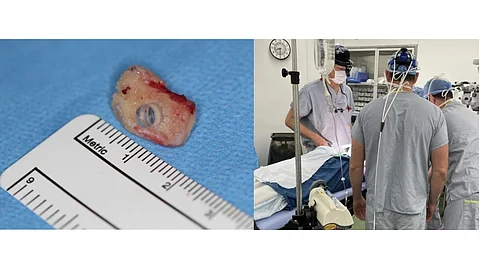Dr. Moloney noted that this surgery is not a universal solution for blindness. It is specifically designed for patients who suffer from severe corneal blindness due to conjunctival scarring caused by autoimmune diseases, chemical burns, or physical trauma. However, for the surgery to be effective, candidates must have a healthy retina and intact optic nerves.
Mount Saint Joseph Hospital shared details about the procedure on Facebook, underscoring its significance. Speaking about her experience, Lane encapsulated the hope surrounding the surgery with her heartfelt words: "I haven't seen myself for ten years. If I can regain even some sight, it will be a beautiful gift."
In a Canadian medical first, doctors successfully carried out the initial phase of this rare vision-restoring procedure, which involves implanting a tooth into a blind patient’s eye. Gail Lane, who lost her sight a decade ago, underwent the first stage of the operation in late February at Mount Saint Joseph Hospital, as confirmed by a hospital Facebook post. The surgery entails removing a patient’s tooth—usually a canine—embedding a plastic lens within it, and later implanting the structure into the eye, CBC reported.
"It's a rare procedure that most people have never heard of, even among ophthalmologists," Dr. Moloney explained to CBC.
Two other patients are also scheduled to have this extremely rare "tooth-in-eye" operation in the near future.
This revolutionary project was possible due to generous donations from St. Paul's Foundation, which raised a staggering $430,000 for the project.
(Input from various media sources)
(Rehash/Sai Sindhuja K/MSM)


